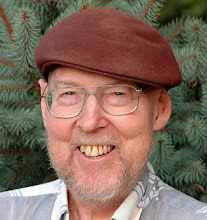“This world does not need another leadership book,” I thought in the fall of 2005 after an hour of browsing through the management and leadership sections of a major bookstore chain.
Two years earlier I had helped found a nonprofit, Evergreen Leaders, whose mission is to help nonprofits thrive. I was on a continual search for resources we could use in our consulting, coaching, workshops, e-letter, and blog. During those two years I browsed the leadership and management sections of bookstores every chance I got. I had found plenty of good books.
But after two years of reading, teaching and writing about leadership I was getting tired of the model of leader as hero.
Organizations thrive on a lot more than leaders. As Marshall Goldsmith, corporate America's preeminent executive coach, said in a Fast Company column, “Long-term success is created by the 40,000 people doing the work -- not just the one person who has the privilege of being at the top.”
“If you read the literature,” Marshall also observed in the same column, ‘you'll see that much of it exaggerates -- if not glamorizes -- the leader's contribution.”
“What this world needs,” I thought that day in the bookstore, “is a book on the 7 habits of highly effective organizations.” Not a very original title, but a seed was planted.
In June 2006 Stephanie Grimes, the president of Evergreen Leaders, and I went to a two day workshop of Stephen Covey’s 7 Habits of Highly Effective People. Covey studied success literature and through his research he identified 7 habits of effective people and also the principles, paradigms, behaviors and results linked with each habit.
As I was writing in my journal on other issues the morning after the first Covey workshop I kept interrupting my journaling to jot down I ideas for the paths of thriving organizations. In the months since I’ve used my 25 years of experience in nonprofit and church leadership as well as years reading leadership and management books to revise and polish the 7 paths. I also added notes on the principles, paradigms, behaviors and results linked with each path.
The world may not need another leadership but I do think it could use a book on the 7 Paths of Thriving Organizations. I’ve begun work on the introduction and the first two chapters. When they’re completed I’ll outline the remaining chapters and then second hire an agent to market the book. I’ll keep you, the readers of this e-letter, informed.
While for-profit businesses and families benefit from using 7 Paths, my passion is helping nonprofits thrive. Every day people in deep need turn to nonprofits for hope. My deepest hope is that countless nonprofits will use the 7 Paths of Thriving Organizations to meet deep human needs and to be great workplaces.
Wisdom for the week: When organizational life is tangled, complex and frustrating, you need a path or seven.
Fare thee well, Rich


No comments:
Post a Comment